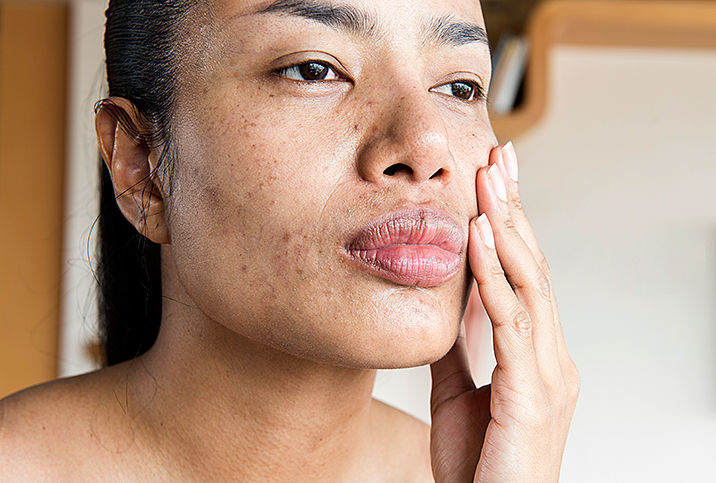Your Rough Patches May Be Keratosis Pilaris

Shower puff, extra-rich body lotion, a rigorous exfoliation process—when we think of methods to get our bodies feeling baby's bottom soft, we've all got a special way to get the job done. But sometimes stubborn dry patches endure regardless, and those random little bumps or rough patches that start small can grow into a massive annoyance.
But hit pause before you reach for industrial-grade sandpaper. Generally, bumps on your arms can be caused by environmental factors, such as allergies, which may be caused by a new bath product or your laundry detergent but the list of other possible suspects is endless.
Everyone responds differently
"There are many factors that contribute to strange bumps on our arms," said Natalie Aguilar, a dermatological nurse and celebrity aesthetician. "Some can be body blemishes or acne, allergies, dryness or clothing irritation, but the most popular [is] goosebumpy-like chicken skin, aka keratosis pilaris (KP). KP is very common and is characterized by tiny small bumps located on the outer arms. Sometimes they're itchy and sometimes they're inflamed. The cause of KP is not really understood but is believed to be genetic."
If you suspect keratosis pilaris is the cause for the rough spots or bumps on your skin, the only way to receive an official diagnosis is via a dermatologist. They will also be able to help you decide the best treatment plan to reduce the bumps.
"Because the cause of KP is not well-understood treatment, it can be very tricky," Aguilar said. "Additionally, everyone responds differently."
Once a dermatologist diagnoses a patient with keratosis pilaris, treatment begins at home via exfoliating the affected area weekly, followed by applying a moisture-rich lotion. However, if those DIY treatments fail, another visit to the dermatologist is in order, at which point your doctor may prescribe a medicated cream.
Active ingredients in these creams can include alpha hydroxy acid, lactic acid, salicylic acid or even urea (yes, as in urine) to help loosen and remove dead skin cells. You may be advised to use a cream with vitamin A, which promotes cell turnover and prevents clogged hair follicles. Tretinoin and tazarotene are topical retinoids usually applied to KP bumps.
Regular exfoliation works
There's a chance your keratosis pilaris won't respond to any of these options. It's a notoriously hard skin condition to permanently treat.
"After treatment, KP is very likely to return," Aguilar said. "It's best to understand what improves the bumps like creams that contain urea, glycolic acid and exfoliants, and wearing cotton clothing, as well as familiarizing oneself with what makes them worse. It is known that long hot showers, not using cream, using strong laundry detergent and softeners, as well as wearing tight clothing made up of irritating materials can make it worse. Picking at them can also worsen them by triggering inflammation."
Aguilar recommends regular exfoliation to help prevent these lumps and bumps but warns not to take it too far.
"Dry-brushing, sugar or salt scrubs, as well as exfoliating lotions, can safely exfoliate our body two to three times a week," she said. "It's best to avoid excessive exfoliation as well as exfoliating on consecutive days. I believe it's best to wait 48 hours before exfoliating again. It's equally important to always follow with a moisturizer."
As far as moisturizers go, Aguilar advises using variants with the above active ingredients, prescription or not.
"Moisturizers and lotions keep skin soft and hydrated, so they do help prevent bumpy and rough skin," Aguilar said. "However when the skin is rough and bumpy, look for moisturizers that contain exfoliating agents and topical retinoids as these aid in loosening and shedding excessive dead skin."


















